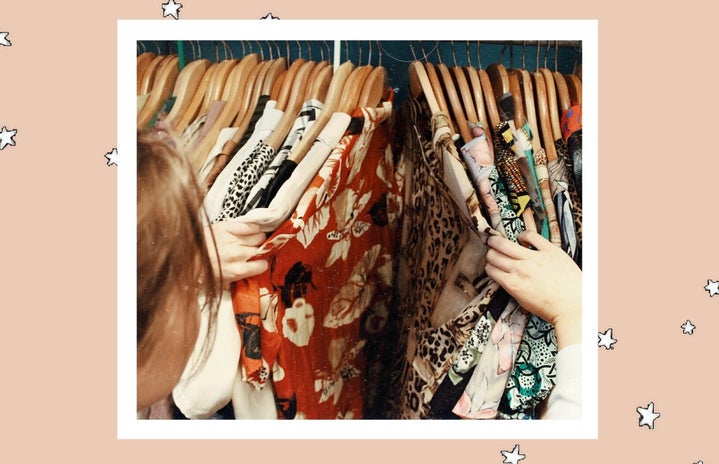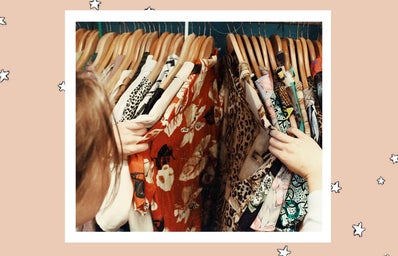Is anyone else’s TikTok feed flooded with product reviews and try-on videos?
So much of my social media feed is two sides of an issue. One side is showing off their newest addition to their absurd candle collection, and the other is talking about how dire our environmental situation is.
How are videos about unboxing dozens of packages related to climate issues? The root of both is overconsumption.
Overconsumption in the most basic form is buying a surplus amount of products that are unnecessary.
Buying that cute sweater at the mall isn’t over-consuming clothing, but a $500 haul from that sketchy online store is.
Unfortunately, with the economic structure in the United States as well as the popularity of social media, we are prompted to buy buy buy.
Haul videos began gaining popularity on platforms like Youtube in 2008 and have been a consistent genre of content on social media sites since then. This snowballed into flaunting every new item bought, and often creating videos centered entirely around showing off large purchases.
The surplus of PR packages sent to influencers by dozens of brands fueled this overconsumption fire.
The only way to keep up with the ever changing trends that were perpetuated by this trend was to over-consume as well.
Why is overconsumption such an issue?
Going beyond the personal issue of overspending and debt, the constant cycling of products is damaging the environment.
Clothes, for example, can take over 200 years to decompose in a landfill, according to Roadrunner Recycling.
These hauls of dozens of new and unnecessary clothing items creates a culture of fast fashion trends and disposability of goods.
According to an article published by Boston University, the United States throws out “34 billion pounds of used textiles.”
Each garment requires land and water to be made. According to the Water Footprint Calculator, it can take 650 gallons of water to create a single cotton t-shirt.
Multiply this by the number of unnecessary clothing purchases made and it gets pretty alarming.
So how can we balance our shopping needs and avoid overconsumption?
Buying new garments here and there is not overconsumption. A great thing to keep in mind while shopping is how useful the product would be and how much it would be worn.
A winter coat collection isn’t needed in areas like southern California, but is necessary in snowy states.
Accounting for weather, personal style, budget, and practicality is a great way to avoid overconsumption.
Another aspect to consider is that many of those who show off these new products are sent to them by the brand. Many influencers are on PR package lists to market products such as makeup and skin care.
These influencers are likely to have a surplus of these products and are often paid to show them off.
Having collections like this is not necessary or feasible for the average consumer.
I recently saw a TikTok video of a woman who had what looked to be hundreds of bottles of skincare stored beneath her bed.
That is nowhere near my reality. Not only would I not be able to afford such a surplus, but I could never use all of those products before they expire.
Being realistic about needs and habits also avoids overconsumption. I know how often I use my skincare products, and rarely buy new ones.
By all means, try out new products, but buying a whole product line before trying the formulas out can lead to unnecessary waste of money and resources.
Another issue of overconsumption is the carbon emissions released when shipping orders.
Constantly buying from online stores and anxiously awaiting the package is more environmentally damaging than one may think.
Ground, air, and maritime shipping all have various levels of pollution depending upon the volume of products being transported.
Air and water pollutants are released with each package ordered, and ordering in surplus adds to the detriment.
Shopping does not equal overconsumption. Creating a surplus of items that reaches past the point of necessity and into frivolity does.
There has been an effort on social media sites such as TikTok to combat this culture of overconsumption. This has been coined as “de-influencing.”
The purpose of this “de-influencing” content is to prompt thought and create dialogue around the necessity and practicality of items.
I have seen creators criticize videos for flaunting overconsumption and give sustainable tips to counteract it, such as shopping second hand or limiting purchases when impulse shopping.
Overconsumption is easily avoidable when acknowledged and understood. Each of us can make a considerable difference in the amount of waste produced if there is a pause to think before a purchase.
What is your opinion on overconsumption? Let us know @HerCampusSJSU


